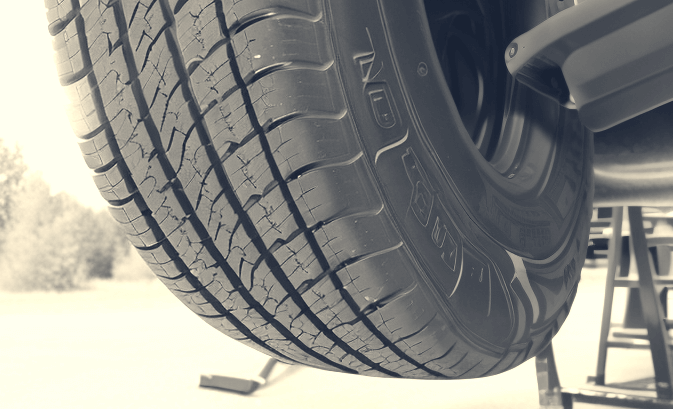How To Fix Inner Tire Wear

Inner tire wear is a common issue faced by vehicle owners, and it occurs when the inner part of the tire tread becomes excessively worn or damaged. This wear pattern can cause numerous problems, including reduced traction, decreased fuel efficiency, and even tire failure if left unaddressed.
Importance Of Fixing Inner Tire Wear
It’s essential to fix inner tire wear as soon as possible to prevent further damage to your tires and ensure your vehicle remains safe and efficient on the road. Maintaining your tires can prolong their lifespan, save money, and reduce the risk of tire-related accidents.
Causes of Inner Tire Wear
Here are some causes of inner tire wear:
- Misaligned Wheels: Misaligned wheels can cause uneven tire wear, particularly on the inner edge. When your wheels are not correctly aligned, they don’t make proper contact with the road, leading to increased wear on specific tire areas.
- Worn or Damaged Suspension: Suspension components, such as struts, shocks, and bushings, help maintain the proper position of your tires. When these components become worn or damaged, they can cause your tires to wear unevenly.
- Improper Tire Pressure: Underinflation or overinflation of your tires can cause uneven wear patterns. Underinflated tires tend to wear more on the inner edge, while overinflated tires wear more on the outer edge.
- Insufficient Tire Rotation: Regular tire rotation is essential to ensure even wear across all tires. Failure to rotate your tires regularly can result in uneven wear, especially on the inner edge of the tires.
- Driving Habits: Aggressive driving habits, such as fast cornering or excessive acceleration, can contribute to inner tire wear by placing additional stress on the tire’s inner edge.
Inspecting Inner Tire Wear
Here are some steps for inspecting inner tire wear:
- Visual Inspection: Regularly inspect your tires for signs of wear, paying particular attention to the inner edges. Look for uneven wear patterns, exposed steel belts or cords, and any other signs of damage.
- Measuring Tread Depth: Use a tread depth gauge or a simple penny test to measure the remaining tread on your tires. This can help you determine if the inner wear is excessive and requires attention.
- Checking Tire Pressure: Check your tire pressure regularly using a tire pressure gauge. Ensure your tires are inflated to the manufacturer’s recommended levels, as this can help prevent uneven wear.
- Checking Wheel Alignment: If you suspect your wheels are misaligned, take your vehicle to a professional for an alignment check. Misaligned wheels can be a significant cause of inner tire wear.
Fixing Inner Tire Wear
Here are some steps for fixing inner tire wear:
- Alignment Adjustment: If your wheels are misaligned, have a professional adjust the alignment to correct the issue and prevent further inner tire wear.
- Suspension Repair or Replacement: If worn or damaged suspension components are causing inner tire wear, repair or replace these components to maintain proper tire alignment and prevent further damage.
- Proper Tire Inflation: Ensure your tires are always inflated to the manufacturer’s recommended pressure levels to prevent uneven wear.
- Regular Tire Rotation: Rotate your tires regularly, typically every 5,000 to 7,500 miles, to ensure even wear across all tires and prolong their lifespan.
- Changing Driving Habits: Avoid aggressive driving habits that can contribute to inner tire wear. Practice smooth and controlled cornering, acceleration, and braking to reduce stress on your tires.
Preventing Inner Tire Wear
Here are some steps for Preventing Inner Tire Wear,
Regular Maintenance
To keep your tires in optimal condition, perform routine maintenance on your vehicle, including regular oil changes, tire rotations, and alignment checks.
Professional Inspection
Have a professional inspect your tires, suspension, and alignment at regular intervals or whenever you suspect an issue. This proactive approach can help identify and address problems before they cause excessive inner tire wear.
Safe & Smooth Driving
Adopt safe and smooth driving habits to reduce stress on your tires and suspension components. Avoid abrupt stops, sharp turns, and aggressive acceleration, which can contribute to inner tire wear.
Conclusion
Inner tire wear is a common issue many vehicle owners face, but understanding its causes and taking appropriate steps can help you address and prevent it effectively.
Regular maintenance, professional inspections, and safe driving habits are crucial in prolonging the lifespan of your tires and ensuring your vehicle remains safe on the road. By being proactive in your tire care, you can save money, reduce the risk of tire-related accidents, and enjoy a smoother, safer driving experience.

